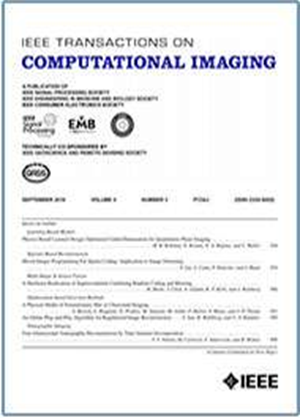高效立体图像分离的不对称视差注意网络
IF 4.8
2区 计算机科学
Q2 ENGINEERING, ELECTRICAL & ELECTRONIC
引用次数: 0
摘要
近年来,人们提出了几种立体图像脱除方法,通过对雨天立体图像视点内和视点间信息的挖掘和利用,来恢复干净背景。尽管这些方法已经取得了很大的进步,但它们对输入图像的视差信息利用不足,并且没有利用现有的高质量和丰富的单图像雨数据集进行学习。在本文中,我们提出了一种有效且高效的网络,称为不对称视差注意网络(APANet),用于立体图像脱轨。具体而言,为了充分利用视差信息,我们首先采用外部注意模块(EAM),该模块由具有两个可学习记忆的外部注意块和门控前馈网络组成,通过结合所有样本之间的相关性来实现更好的特征表示。随后,我们提出了一种不对称视差注意模块(APAM)来有效地利用从左右视图分别提取的特征之间的交叉注意,该模块通过挖掘视差信息(立体图像中每个匹配像素对的位置信息)计算出一个精心设计的掩模来过滤无用的立体特征关系。为了学习我们的网络,我们还构建了一个未配对的真实世界立体雨图像数据集,称为StereoRealRain,它由一些视频片段(包括11803对图像)组成。此外,我们还引入了单幅到立体图像去训练的精馏策略,将从单幅图像去训练中学习到的知识转移到立体图像去训练中,以提高网络的泛化能力。在合成和现实世界立体降雨数据集上进行的大量实验证明了我们的方法的有效性。本文章由计算机程序翻译,如有差异,请以英文原文为准。
APANet: Asymmetrical Parallax Attention Network for Efficient Stereo Image Deraining
Recently, several stereo image deraining methods have been proposed to recover clean backgrounds from rainy stereo images by exploring and exploiting intra and inter-view information. Despite these methods have achieved great progress, they under-utilize the parallax information of input images, and do not take advantage of existing high-quality and abundant single image rainy datasets for learning. In this paper, we propose an effective and efficient network, named Asymmetrical Parallax Attention Network (APANet), for stereo image deraining. Specifically, to fully exploit the parallax information, we first adopt an External Attention Module (EAM), which consists of an external attention block with two learnable memories, and a gated feed-forward network, for achieving a better feature representation by incorporating the correlations between all samples. Subsequently, we propose an Asymmetrical Parallax Attention Module (APAM) to efficiently exploit the cross-attention between the features separately extracted from the left and right views, which filters useless stereo feature relationships with a well-designed mask calculated by excavating the parallax information (positional information of each matched pixel pair within a stereo image). For learning our network, we also construct an unpaired real-world stereo rainy image dataset, called StereoRealRain, which consists of some video clips (including 11803 image pairs). Moreover, we also introduce a Single-to-Stereo Image Deraining Distillation strategy for transferring the knowledge learned from single images deraining to stereo images deraining to improve the generalization ability of our network. Extensive experiments conducted on synthetic and real-world stereo rainy datasets demonstrate the effectiveness of our method.
求助全文
通过发布文献求助,成功后即可免费获取论文全文。
去求助
来源期刊

IEEE Transactions on Computational Imaging
Mathematics-Computational Mathematics
CiteScore
8.20
自引率
7.40%
发文量
59
期刊介绍:
The IEEE Transactions on Computational Imaging will publish articles where computation plays an integral role in the image formation process. Papers will cover all areas of computational imaging ranging from fundamental theoretical methods to the latest innovative computational imaging system designs. Topics of interest will include advanced algorithms and mathematical techniques, model-based data inversion, methods for image and signal recovery from sparse and incomplete data, techniques for non-traditional sensing of image data, methods for dynamic information acquisition and extraction from imaging sensors, software and hardware for efficient computation in imaging systems, and highly novel imaging system design.
 求助内容:
求助内容: 应助结果提醒方式:
应助结果提醒方式:


